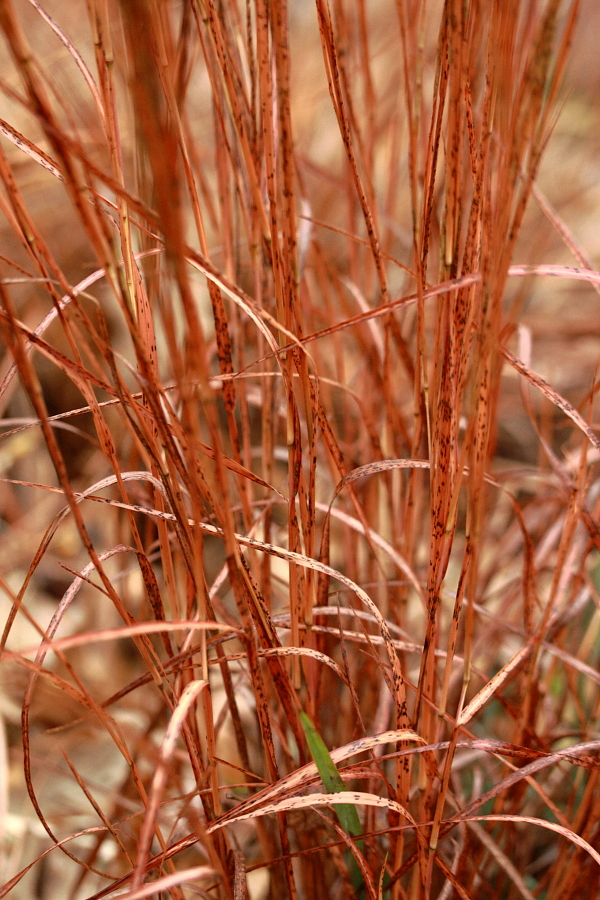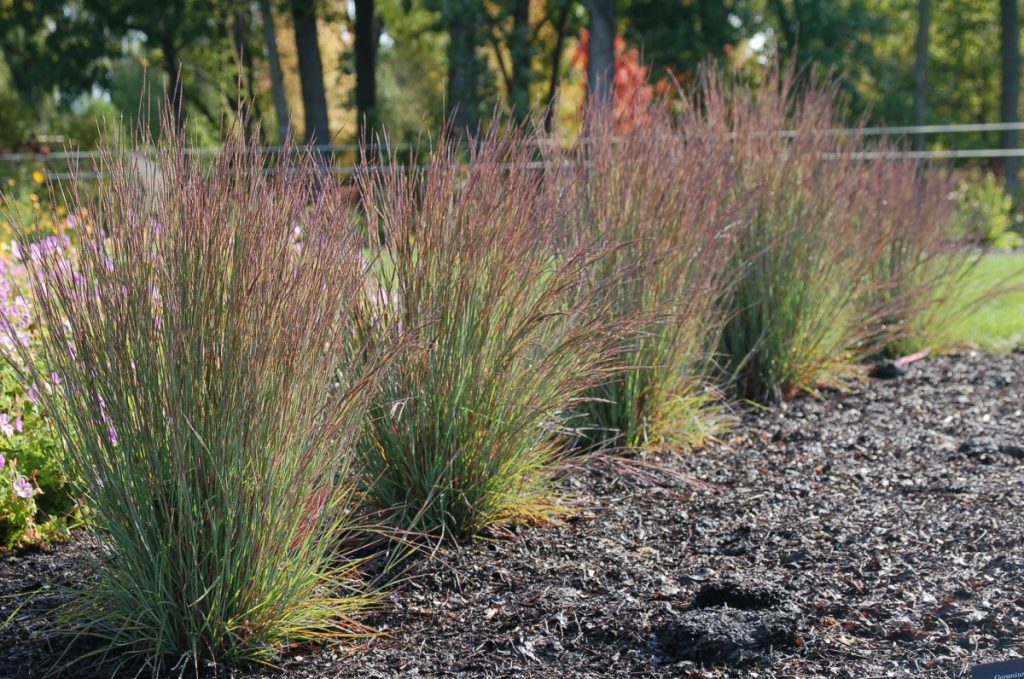Last year and this spring, it seemed that it would never stop raining. Now, we are in an extended drought. Even with irrigation, my front lawn is browning out. Happily, many of the plants in my gardens are drought tolerant.
There is a never-ending search for tough, drought tolerant plants. Many ornamental grasses fit into this category, especially those native to our prairies. Panicum virgatum (Switchgrass) is probably the best known but now that the Perennial Plant Assocation has chosen Schizachyrium scoparium and Cultivars as its 2022 Plant of the Year, it is time to add this grass to the tough, drought tolerant category.
Little Bluestem is a dependable clumping grass that blends well with perennials such as asters, sedums, coneflowers, and other grasses. Native grasses play their part in the pollinator story too. Little Bluestem is a larval host for a variety of butterflies and moths such as crossline skipper, Dakota skipper, and Ottoe skipper.
Native to a broad swath of North America, it was one of the dominant grasses of the vast tallgrass prairies. In average to lean, well-drained soils, stems will remain upright but can flop easily if conditions are too rich or moist. Cultivars have been selected for shorter plants, enhanced leaf colors, and stronger stems but I want to emphasize that very well-drained soils are crucial.


Summer through fall, the slender leaves and stems of Schizachyrium scoparium are an ever-changing kaleidoscope of gray-green, blue, pink, purple, copper, mahogany, red, and orange tones. Wispy silver-white seed heads sparkle in autumn sunlight and coppery brown leaves persist through winter. I remember quite well when a friend designed a low maintenance, drought tolerant slope garden for a church. It was absolutely spectacular during the winter with its coppery foliage.
Little bluestem’s spikiness complements native and non-native perennials alike. An easy fit for mass plantings or meadows, it is just as brilliant in traditional borders, gravel gardens, and green roofs. Perfect partners are recent PPOYs such as Calamintha nepeta ssp. nepeta, Asclepias tuberosa, Stachys ‘Hummelo’, and Allium ‘Millenium’.

There are several cultivars now, varying in height and adaptability. Therefore, PPA asked some of its board members to pick the best performers for their regions. For those of us in the Great Lakes region, Patti Steinhauser of Stonehouse Nursery in Michigan chose Schizachyrium scoparium ‘Carousel’, a short cultivar that is usually grows 30” x 30”. She says: “This uniquely mounded selection forms a wide clump of blue-green foliage that emerges nearly horizontal and matures into strong, upright stems that remain standing through inclement weather and winter. It takes on pink, copper and orange-red tones in fall topped with tiny seed tufts.”

The selector for the Central Region was Richard Hawke, manager of the Chicago Botanic Garden trial gardens. Richard’s choice was Schizachyrium scoparium ‘Jazz’.
“The striking silvery blue leaves of Schizachyrium scoparium ‘Jazz’ are most comparable to ‘The Blues,’ but at 36 inches tall and 30 inches wide, ‘Jazz’ is a foot shorter than ‘The Blues’ and has sturdier stems. ‘Jazz’ was upright at all times including winter during the Chicago Botanic Garden’s trial, whereas ‘The Blues’ usually flopped early in the summer. The late-season silvery seed heads are followed by a strong purple to deep bronze fall color. ‘Jazz’ was introduced by Brent Horvath at Intrinsic Perennial Gardens in Illinois.

Although Shannon Currey of Hoffman Nursery is from North Carolina, I thought you should know that she prizes ‘Standing Ovation’ because it doesn’t flop when placed in fertile or irrigated sites, a big plus for those wanting a tidier look.” This cultivar is usually 3’ tall but 4’ in bloom.
Looking something a bit different? Give this grass with four seasons of interest a try.


0 Comments